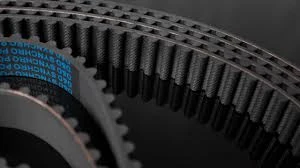- Arabic
- French
- Russian
- Spanish
- Portuguese
- Turkish
- Armenian
- English
- Albanian
- Amharic
- Azerbaijani
- Basque
- Belarusian
- Bengali
- Bosnian
- Bulgarian
- Catalan
- Cebuano
- Corsican
- Croatian
- Czech
- Danish
- Dutch
- Afrikaans
- Esperanto
- Estonian
- Finnish
- Frisian
- Galician
- Georgian
- German
- Greek
- Gujarati
- Haitian Creole
- hausa
- hawaiian
- Hebrew
- Hindi
- Miao
- Hungarian
- Icelandic
- igbo
- Indonesian
- irish
- Italian
- Japanese
- Javanese
- Kannada
- kazakh
- Khmer
- Rwandese
- Korean
- Kurdish
- Kyrgyz
- Lao
- Latin
- Latvian
- Lithuanian
- Luxembourgish
- Macedonian
- Malgashi
- Malay
- Malayalam
- Maltese
- Maori
- Marathi
- Mongolian
- Myanmar
- Nepali
- Norwegian
- Norwegian
- Occitan
- Pashto
- Persian
- Polish
- Punjabi
- Romanian
- Samoan
- Scottish Gaelic
- Serbian
- Sesotho
- Shona
- Sindhi
- Sinhala
- Slovak
- Slovenian
- Somali
- Sundanese
- Swahili
- Swedish
- Tagalog
- Tajik
- Tamil
- Tatar
- Telugu
- Thai
- Turkmen
- Ukrainian
- Urdu
- Uighur
- Uzbek
- Vietnamese
- Welsh
- Bantu
- Yiddish
- Yoruba
- Zulu
Dec . 10, 2024 07:38 Back to list
flat transmission belt
Understanding Flat Transmission Belts Fundamentals and Applications
Flat transmission belts are essential components in the machinery and automotive industries, serving as versatile tools for transferring power between shafts. Unlike their rounded counterparts, flat belts have a broad and flat surface, which allows them to make contact with pulleys across a larger area. This design enhances their efficiency and offers several advantages that make them a popular choice in various applications.
Design and Construction
Flat transmission belts are typically made from a combination of materials that provide strength, flexibility, and durability. Common materials include rubber, leather, and synthetic polymers. Rubber belts may feature additional reinforcements, such as fabric or steel, to enhance their load-bearing capacity and lifespan. The flat design minimizes the risk of slippage, ensuring a reliable transfer of power.
The construction of a flat belt is relatively straightforward. It consists of a long, continuous piece that wraps around pulleys positioned on parallel shafts. The belt’s width and thickness are customized based on the application's requirements, balancing factors like tension, load, and speed. Proper alignment and tensioning are critical to optimize performance and prevent premature wear.
Principles of Operation
The principle behind flat transmission belts is quite simple when one pulley, known as the driver, rotates, it transfers motion to the belt. The belt, in turn, moves the following pulley, known as the driven pulley. This transfer of motion enables machines and vehicles to function efficiently. The friction between the belt and the pulleys generates the necessary traction needed for movement.
In general applications, the design of the pulley can influence the efficiency of the belt. For instance, a larger pulley can provide a mechanical advantage, while a smaller pulley might enable quicker acceleration. The material properties of the belt, including its coefficient of friction, play a crucial role in determining how well it performs under varying loads and speeds.
Advantages of Flat Transmission Belts
flat transmission belt

Flat transmission belts boast several advantages over other types of belts. One of the key benefits is their ability to handle higher loads and provide greater efficiency due to the increased surface area in contact with the pulleys. This characteristic reduces wear and extend the life of both the belt and the associated components.
Another advantage is the smooth operation of flat belts, which minimizes the vibrations and noise typically associated with other belt systems. This feature is particularly valuable in environments where noise reduction is critical, such as in manufacturing facilities and public spaces.
Flat belts also allow for easier maintenance. Since they can be replaced without requiring significant disassembly of the machinery, they reduce downtime during maintenance operations. The straightforward design facilitates inspection and adjustment, ensuring that the system can operate at optimal efficiency.
Applications in Industry
The versatility of flat transmission belts makes them suitable for a wide range of applications. In the automotive industry, they are commonly used in various engines to drive alternators, water pumps, and air conditioning compressors. Furthermore, they find applications in conveyor systems, helping to transport products smoothly across production lines.
In manufacturing, flat belts drive machinery like lathes, milling machines, and grinding equipment. They are vital in textile machines, agricultural equipment, and even some types of renewable energy systems. The adaptability of flat belts means that industries can customize their use according to specific operation requirements.
Conclusion
Flat transmission belts remain integral to the machinery landscape, proving their worth across numerous applications with their efficiency, durability, and ease of maintenance. As industries continue to evolve and demand more robust solutions, flat belts will likely remain a foundation of mechanical design, further innovating and adapting to meet new challenges. Understanding their mechanics and advantages allows engineers and technicians to harness their potential fully, ensuring optimal performance in a myriad of applications. Overall, the flat transmission belt is a testament to engineering ingenuity, playing a crucial role in the functionality of modern machinery.
-
Upgrade Power Steering Pump Belt for Smooth, Quiet Operation
NewsAug.27,2025
-
Precision Timing Belt & Chain: Engine Performance & Durability
NewsAug.26,2025
-
Precision Lathe Drive Belts: Durable & Reliable Performance
NewsAug.25,2025
-
84.5 Serpentine Belt: Durable & Precision Fit for Your Engine
NewsAug.24,2025
-
Premium Ribbed Drive Belts for Quiet Power Transmission
NewsAug.23,2025
-
High-Performance Vehicle Timing Belt for Engine Precision
NewsAug.22,2025

